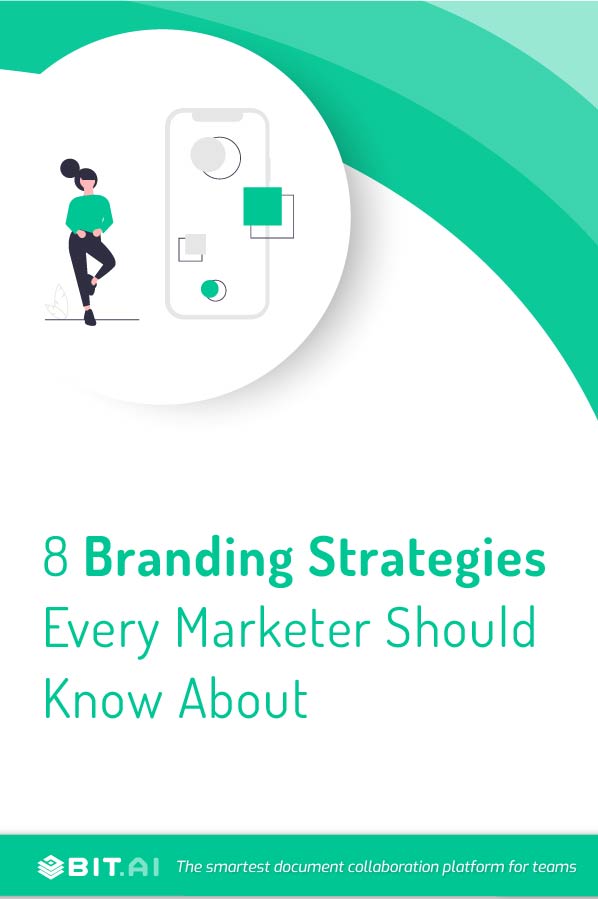Products are made in the factory, but brands are created in the mind. – Walter Landor
According to stats, 94% of the world’s population recognizes the red and white Coca-Cola logo. That’s branding wizardry, and it helps you embed a product into the purchase habits of consumers and their lives.
Without a clear, long-term branding strategy, your brand will be unfocused and directionless – two things that can tarnish your brand (and business) anytime.
And, despite what many people believe, branding is NOT limited to designing a nice logo, creating a catchy tagline, and using a beautiful color palette.
In the real world, a brand is made up of everything from your visual identity, your messaging to the way people perceive your business. It’s the feeling, experience, and emotion that consumers associate with your brand.
You might think that how your business or product is perceived by the outside world is completely out of your control. Guess what? It’s far from the truth!
By shaping every aspect of your brand thoughtfully and purposefully, you can actually build stronger relationships with your audience, improve your reputation, get more exposure, and boost your revenue.
Now, let’s arm you with some of the best branding strategies with real-world examples.
1. Co-Branding
There’s an age-old saying ‘whole is bigger than parts’, and that’s the essence of co-branding. It is the partnership between two brands with a shared set of values.

Co-branding is an effective way to boost brand awareness and enter new markets – but only if you do it the right way. For a co-branding partnership to work, there are a few key things you need to keep in mind:
- You and your branding partner should project the same vibe and appeal to the same kind of customer.
- You should understand each other and have a good level of compatibility.
- Do not lose sight of your brand values for the sake of adopting a new venture.
- It should be a win-win game for all the parties involved.
- Cover all the bases – from how your brand will appear online to internal communication.
A perfect example of co-branding is the partnership between Taco Bell & Doritos. The two joined hands and came up with ‘Doritos Locos Tacos’, and the campaign was a huge success!
Taco Bell sold over 100 million Doritos Locos Tacos in the first ten weeks of launch. In fact, they had to hire 15,000 more workers in the store to keep up with the high demand and increased traffic.
So, why did this co-branding campaign work so well? The primary reason is that Taco Bell & Doritos share the same kind of consumer, i.e, young people who love fast, inexpensive junk food.
2. Product Branding
We have a question for you – what makes a good product? You might have said quality, price, and usefulness. But, there’s one more thing that helps you level up the game and bring colossal revenue – product branding.
Product branding involves a clever amalgamation of design, experience, messaging, and tactics that helps in creating a unique identity of a product, attracting consumers, and encouraging them to come back.
Almost every company in the world is taking advantage of the product branding strategy and with good reason. It’s the perfect way to tug the heartstrings of the consumers and establish a powerful connection.
Let’s take an example. When we hear the phrase ‘Taste The Feeling’, we immediately think of Coca-Cola. Similarly, when we hear ‘Just Do It’, we think of Nike, right?
In a nutshell, good product branding makes your product recognizable, distinguishes it from the competitors, and helps you establish an emotional connection with customers.
Read more: Emotional Branding Strategy Guide for Marketers!
3. Cultural & Geographic Branding
Cultural and geographic branding are two different types of branding, however, they are still very closely linked to each other. So, what kind of businesses can leverage these branding strategies?
Even though cultural and geographic branding is extremely evident in tourism and tourism-related businesses, they can be used by any business that wants to emphasize its region of origin.
Geographic branding aims to attract people to use a product/service because of its geographic association. Cultural branding is quite similar, but it focuses on cultural aspects of the region instead of geographic ones.
Think of the Eiffel Tower. It’s instantly recognizable as a French national icon, right? Many businesses use the image of the Eiffel Tower to show themselves as Parisian. That’s geographic branding.
Similarly, a tea company that ships teas from India to other parts of the world might leverage some cultural branding. They can use the Indian flag’s color in their logo.
4. Corporate Branding
Before we get to the definition of corporate branding, let’s explore (not literally) one of the best and most loved corporate brands out there – Disney.
Disney doesn’t just sell a single product, a ticket to the theme park, or a single movie – but an entire extravagant experience. We always associate Disney and its logo with joy, youth, and imagination.
Here’s another example. Apple has built such a strong brand that people stand in long queues to buy their products when they are released. People are willing to buy an Apple product just because it’s an Apple product.
There’s a reason behind it, and it has a lot to do with corporate branding. In this branding strategy, instead of marketing a single product, you invest in your brand as a whole.
Corporate branding helps you build a long-term connection with customers, and every time you offer something new, it is easier for them to associate with you.
5. Personal Branding
Building a brand is a very important concept for a business, and we all know that already. Well, it turns out, personal branding is just as important for an individual.

The best part? Building a personal brand is not very different from building a business brand. Instead of marketing a product or a business, you have to market yourself.
Personal branding gives you a chance to show the public who you are, what you stand for, and how you are different from others in the field. It really opens many doors for you in the future.
For example, think of Oprah Winfrey or Elon Musk. Both of them have a clear personal brand that’s globally recognized. Everyone knows Oprah as a kind-hearted woman and Musk is a tech pioneer.
We sometimes even feel like we know them on a personal level, and we pay attention to their work because of who they are as individuals. That’s the power of personal branding!
Read more: Brand Authenticity: Definition, Importance & Tips To Build It!
6. Retail Branding
The digital revolution has tremendously impacted the retail industry. More and more people are now shopping online, and this trend is not changing anytime soon.
That’s why retail branding is important to keep shoppers coming through the doors. You have to up your retailing game and get your customers to shop at the retail store.
You need to turn your store into experiences that a shopper wants to keep reliving. The layout of the store, light fixtures, decor, music, display pictures, and even the floor – carefully select every single thing.
Trader Joe, a US-based supermarket, does retail branding really well. Unlike other supermarkets, when you enter Trader Joe, you get a more intimate and insulated feel.
The location-specific decor and the food samples offered by Trader Joe make each trip wonderful (and delicious). These are a few things that an online store can never replicate!
7. Service Branding
When you want to purchase a pair of shoes, you can just try them on at the store. If they do not fit well or have poor quality, you will be able to notice that immediately.
This is why branding for products is easier than branding for services, as it focuses on particular characteristics that the buyer might notice before making the purchase.
On the other hand, in service branding, you have to brand something that isn’t visible and doesn’t always provide immediate results. Such services need long-term branding.
To put it simply, in service branding, your aim is to generate the feeling of trust in the minds of your target group – even if they aren’t able to see the outcome right away.
To succeed in service branding, it is important for your business to be proactive, creative, anticipate needs, delight your customers, and deliver the most transparent customer service.
Read more: Brand Style Guide: What is it & How to Create it? (Template Included)
8. Offline Branding
There’s a plethora of advice out there about online branding. Everywhere you go, you will some how-to guides and tips on grabbing attention on digital media.
But you do not need to limit yourself to the tried and tested methods of building a brand. Get a little creative and consider other approaches such as hosting a trade show and inviting local media to it.
Although weakening dramatically, offline branding is far from dead. You can still use billboards, event booths, print ads, vehicle wraps, trade shows, etc. to get your brand’s name and products out there.
You know your business better than anyone, so choose the method that works for you. Think about your expertise and kickstart your offline branding game.
Just make sure that you keep a consistent brand identity both online and offline. This will reinforce your branding and simultaneously build customer trust and loyalty.
Wrapping Up
A good branding strategy pays off in more ways than one. It can help you connect with your existing customers, attract new ones, and boost loyalty and recognition.
Whether you are a small business or a big-shot company, you obviously want people to know about you…and a branding strategy helps you do just that.
Remember – your brand starts with you, but it always ends with the way people perceive your business!
What is your favorite branding strategy? Which strategy has helped you the most? Which brand do you love the most? Don’t forget to let us know by tweeting us @bit_docs. Cheers. ✨
Further reads:
User Research: Definition, Importance & Methods!
Brand Voice: What is it & How to Define it for your Business!
Social Proof: 8 Ways to Use it to Get More Sales!
Guerrilla Marketing: What is it and How to Use it For Marketing!
Customer Profile: What is it & How to Create it?
Business Competition: 11 Ways to Stay Ahead in 2022!
Tripwires: Definition, How to Include them & Examples!
Upselling: What is it and How to do it Effectively?
Unique Selling Proposition: What is it & How to Create Your Own?



